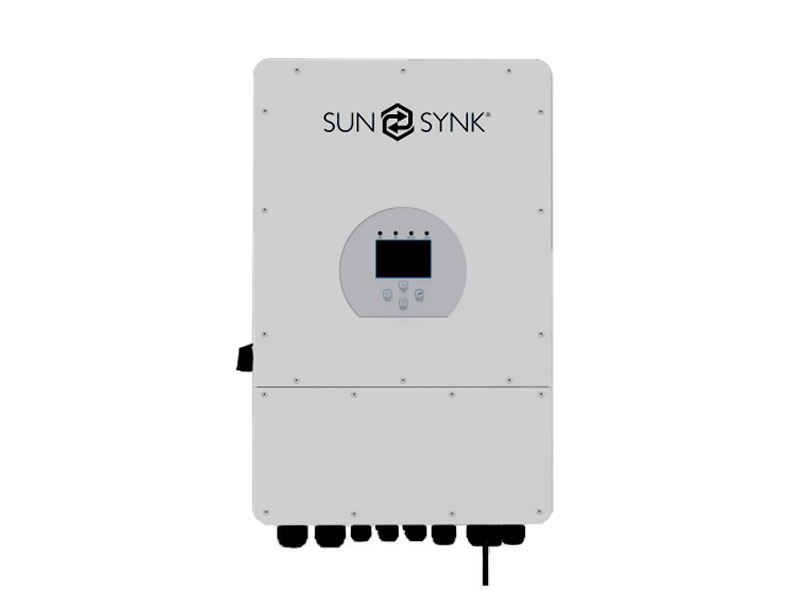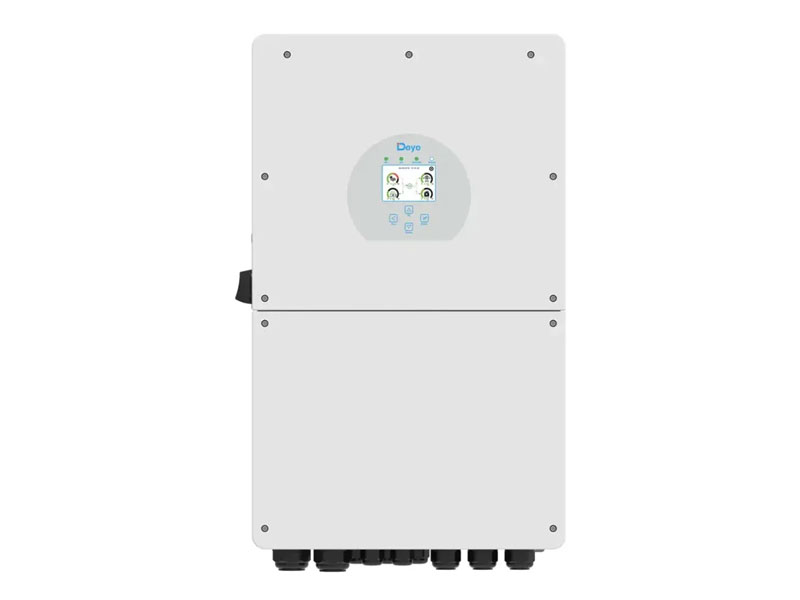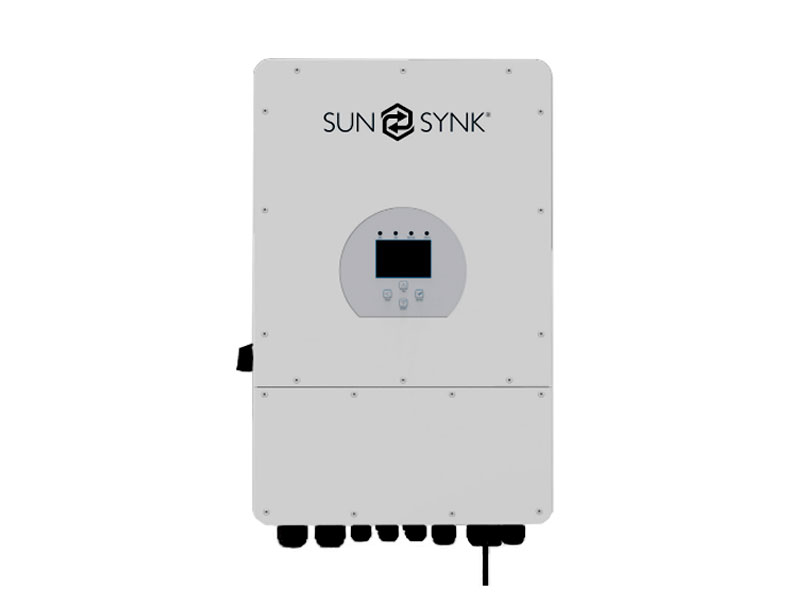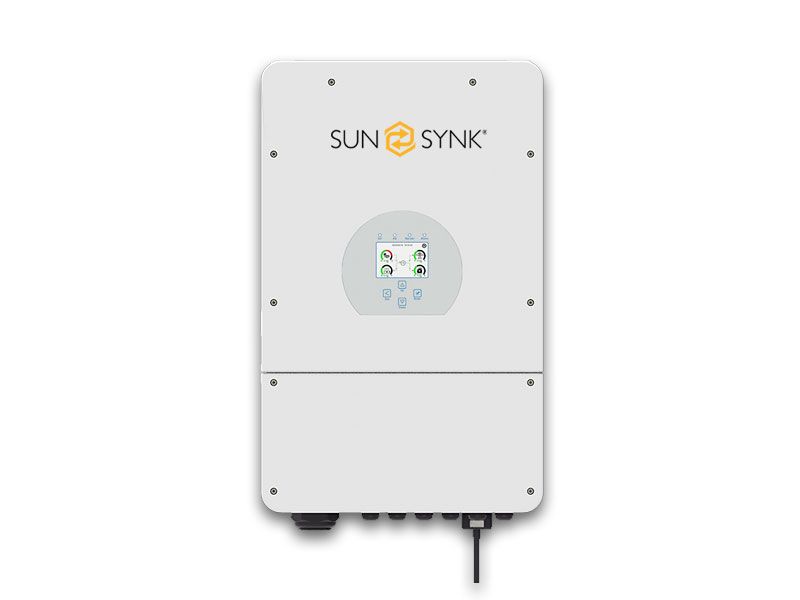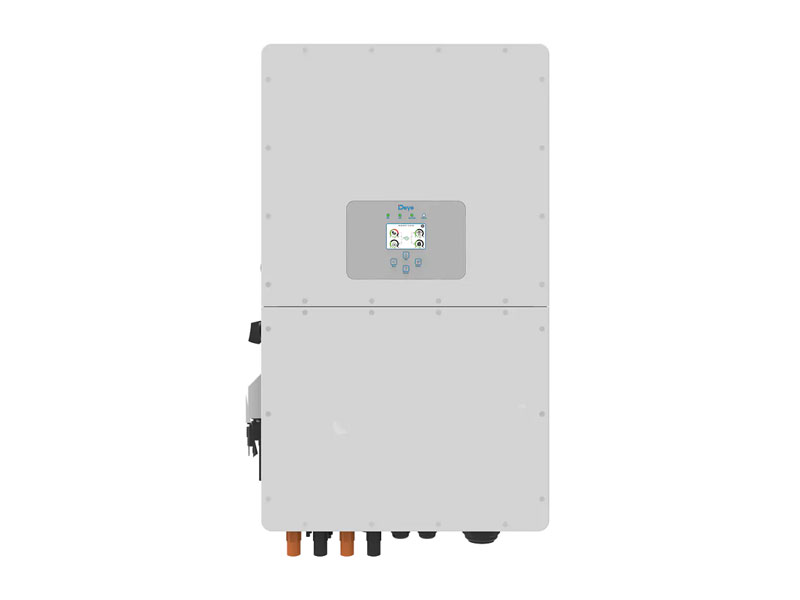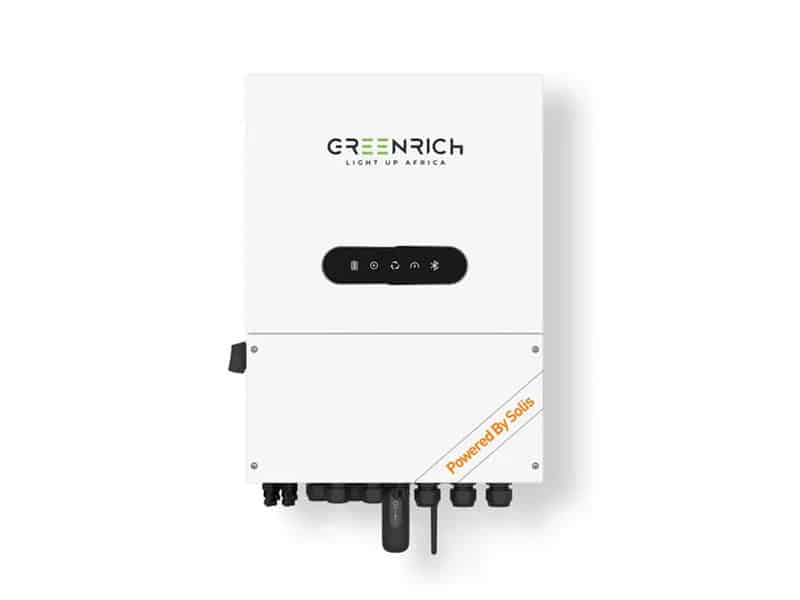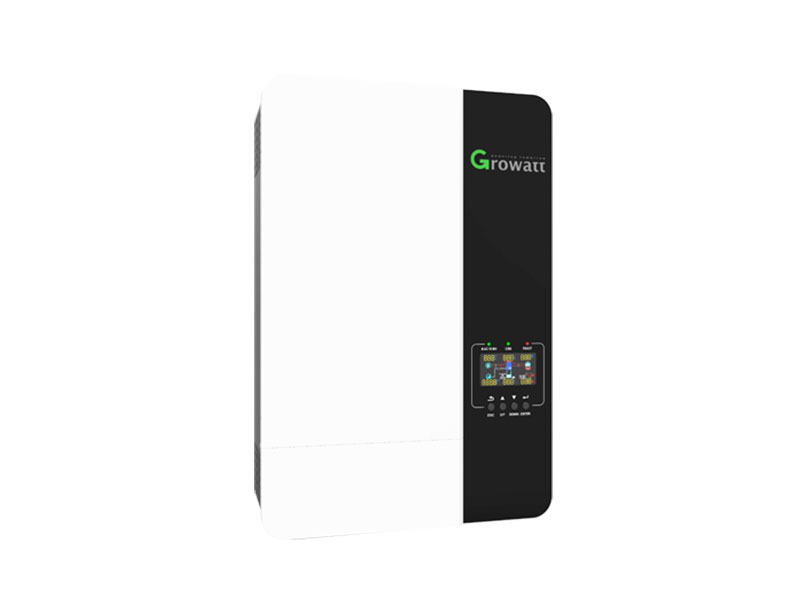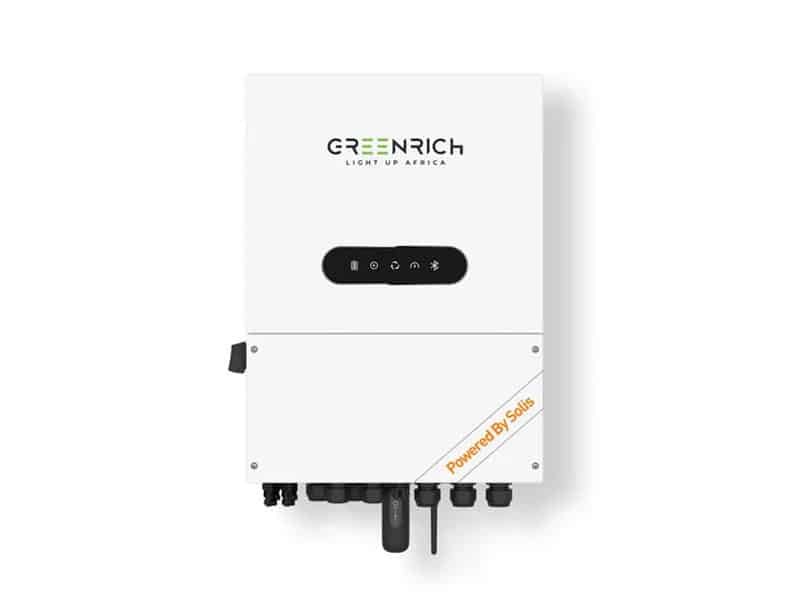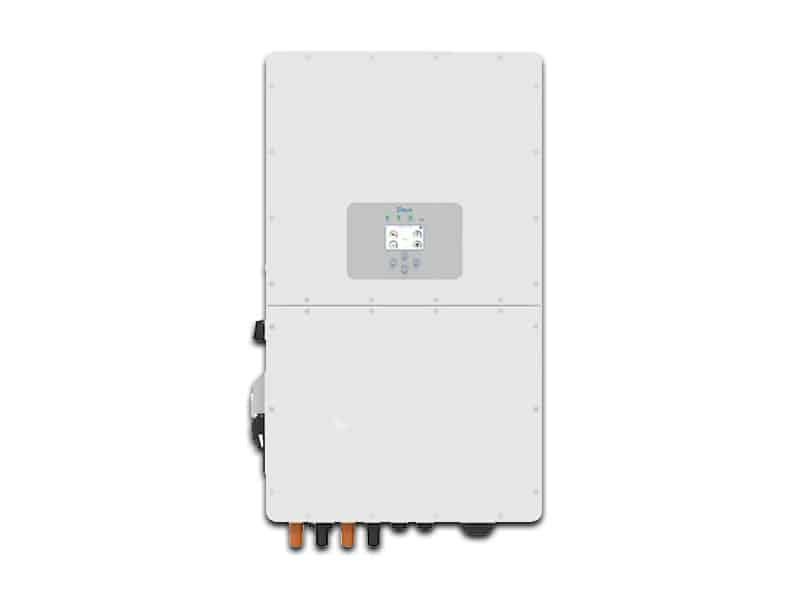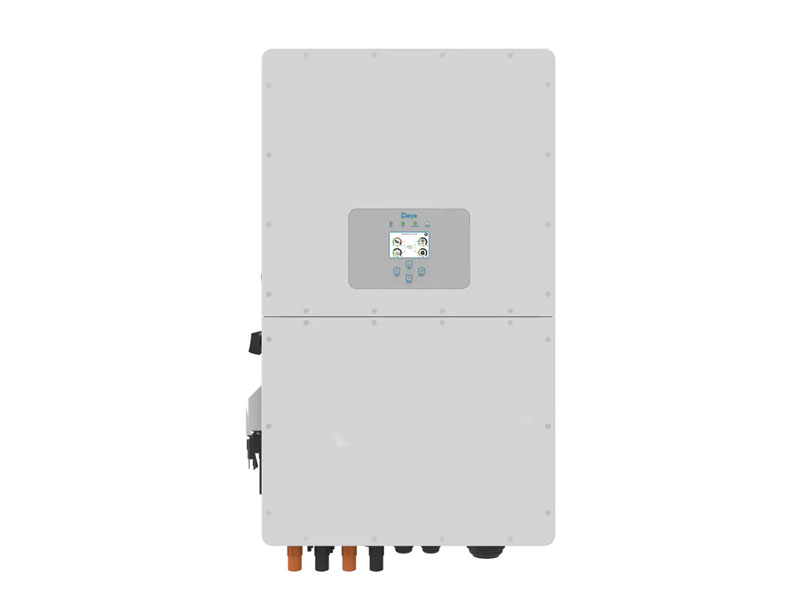What is a solar inverter?
Solar inverters convert direct current into alternate current. Unlike alternate current, a direct current flows in one direction. Solar panels produce DC current while the batteries also store DC power. However, appliances run on AC power. A solar inverter is required for all solar systems and storage systems such as batteries.
Types of solar inverter installations
• On-grid solar without battery storage
• Off-grid solar with battery storage
• On-grid solar installations are the most popular and affordable solar installations. These systems use inverters to convert the DC power from the solar panels to AC power. Therefore, the power can be directly used on your power grid or for your appliances.
• Off-grid solar system installations are much more complex than on-grid solar systems. These systems require both solar panels and battery storage for the DC power from the solar panels. Multiple inverters may be required in these installations such as a solar inverter or a sophisticated battery inverter charger.
Two types of solar inverters
String inverters are used when solar panels are installed and linked together to form a string. A string can be made up from as little as three panels to fifteen or more panels. DC power is absorbed by the string to the inverter to be converted to AC power.
Micro inverters
Small inverters usually attached to the back of a solar panel. Micro inverters usually convert the power of one of the two of the solar panels to AC power. In a solar system, many micro inverters may be required. These inverters can be less affordable compared to string inverters.
Advantages of Microinverters include:
• Monitoring
• Safety
• Performance
Simple off-grid solar system
Uses a battery inverter to convert DC power from a battery to AC power for your electrical appliances. These systems require battery charges and regulators.
Advanced off-grid solar system
These solar inverters consist of built-in chargers known better as inverter charges.
Interactive inverters
Some more advanced inverters include generator control systems and monitoring capabilities. These are known as interactive inverters. These inverters are used alongside solar inverters to create an AC coupled system.
All-in-one hybrid solar inverter
All-in-one hybrid solar inverters combine a solar inverter and inverter charger into one single unit. These inverters allow you to enable which is known as “self-use” solar energy.
The most simple and economical solar and battery systems use a hybrid solar inverter. These inverters combine a solar inverter, charger and battery inverter together with software which can be programmed to determine the most efficient use of your available energy. Having all the components in one simple plug and play unit means hybrid inverters are generally much lower cost and easier to install. These inverters also offer instantaneous backup like a UPS.
a Hybrid inverter are a very affordable choice for average size households who want to be more self-sufficient using solar and batteries but don’t intend on disconnecting from the grid or rarely experience blackouts,
a hybrid solar system uses a simple hybrid inverter which contains a solar inverter and battery inverter/charger together with clever controls which determine the most efficient use of your available energy.
One of the most popular solar system types is an off-grid or a stand-alone solar power system. An off-grid solar power system uses electricity from the solar panel array to charge the solar batteries by using a charge controller, usually an MPPT device. This MPPT device is usually integrated into a high-quality Growatt solar inverter. The electricity in the solar batteries is converted by the means of a solar inverter, to provide power to household appliances. Thus, by saving up electricity in batteries, you can power a home that doesn’t have access to an electricity grid from Eskom, even at night or on cloudy days.
Components that make up an off-grid solar system
Solar Panels
A correctly sized solar panel array which is best installed for the most sunlight exposure in the specific region and also, the amount of space on the roof and energy consumption needs, is the first aspect to keep in mind when installing an off-grid solar inverter for an off-grid solar system.
Solar batteries
Solar batteries are required to provide power to appliances even if there is no AC power from Eskom or when the sun is not shining. The solar panels will charge the solar batteries throughout the day while the sun shines and by a correctly sized off-grid solar system, the batteries are fully charged when nightfall arrives. For an off-grid scenario, a battery bank that consists of multiple solar batteries connected is commonly used.
Solar off-grid inverters
To convert the DC power generated by the solar panels, to alternating or AC, which is used to power the appliances in your home, you need an off-grid solar inverter for the conversion of power into a clean AC pure sine wave.
Solar Hybrid inverters
Solar hybrid inverters give you a combination of solar off-grid inverters and also solar grid-tied inverters. Solar hybrid inverters have two modes, one for pushing DC energy collected from the solar panels into the grid of Eskom and a mode for off-grid to charge batteries with the energy collected from the solar panels. Solar hybrid inverters can also function as a grid-tied inverter or as an off-grid inverter.
Solar charge controllers
There are two main or popular types of solar charge controllers namely: MPPT (maximum power point tracker) charge controllers and PWM (Pulse Width Modulation) charge controller. The solar charge controller is an essential part to save the health of the solar batteries connected in the solar system. The solar charge controller regulates the voltage and currents that the solar battery receives. Therefore, preventing solar battery overcharging and long-term damages.
Alternative energy sources
It may be worth considering an alternative source of energy as back up of the system. This is needed during the depths of winter when solar production is at its lowest. Many owners who use off-grid systems combine them with a generator that can power home’s electricity needs.
Advantages of Off-Grid Solar Systems
- No access to the utility grid
- Off-grid solar systems can be cheaper than extending power lines in certain remote areas.
- Become energy self-sufficient
- Another big advantage of going off-grid is that, 100% independence from electricity retailers such as Eskom. Need not to pay anything for electricity costs, and 100% insured against rising energy prices. The system also protects from grid-tied power failures or blackouts. Living off the grid and being self-sufficient feels good. Energy self-sufficiency is also a form of security. Power failures on the utility grid do not affect off-grid solar systems.
10kw Sunsynk Hybrid single-phase inverter
R41,936.3812kw Sunsynk Hybrid single-phase inverter
R49,295.7716kw SunSynk Hybrid Inverter
R59,297.9950kw Deye 3-Phase Hybrid HV Inverter
R112,942.945kw Greenrich Hybrid Inverter 48V
R16,999.005Kw Growatt SPF 5000 ES Inverter
R12,066.886kw Greenrich Hybrid Inverter 48V
R19,499.00Deye 12kw 3-Phase Hybrid Inverter
R47,775.20Deye 16kw hybrid solar inverter
R55,016.06Deye 20kW Hybrid 3 Phase Inverter
R52,119.71Deye 30kW Hybrid 3 Phase Inverter
R75,290.47


